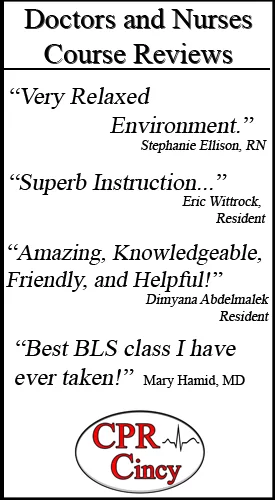Mega Code Training is an essential component of healthcare education. It focuses on simulated emergency scenarios to train healthcare providers in advanced life support techniques. It simulates real-life situations, providing learners hands-on experience and confidence in managing critical medical emergencies. For beginners in the medical field, Mega Code Training is invaluable as it lays the foundation for proficiency in basic and advanced life support skills. It offers a structured approach to learning, allowing novices to gain practical experience and prepare for real-world emergencies effectively.
This handbook is a comprehensive guide for beginners embarking on their Mega Code Training journey. It covers essential concepts, practical skills, challenges, and strategies for success in Mega Code Training and beyond.

What is Mega Code Training?
Mega Code Training involves simulated scenarios where healthcare providers respond to medical emergencies, such as cardiac arrest, respiratory distress, and trauma. It incorporates elements of Basic Life Support (BLS), Advanced Cardiovascular Life Support (ACLS), and Pediatric Advanced Life Support (PALS) protocols.
Mega Code Training has evolved as an indispensable tool in healthcare education, offering a safe environment for learners to practice critical skills without compromising patient safety. It bridges the gap between theoretical knowledge and clinical application, preparing providers for real-life emergencies. Understanding key concepts and terminology is essential for effective communication and collaboration during Mega Code Training. Terminology related to airway management, circulation, rhythm recognition, and medication administration forms the basis of training sessions.
Getting Started with Mega Code Training
Beginners should establish clear goals and expectations for their Mega Code Training journey. Whether it’s mastering specific skills, gaining confidence in emergency response, or obtaining certification, setting realistic objectives guides the learning process. Choosing reputable resources and training programs is crucial for quality Mega Code Training. Beginners should research accredited institutions, review course curricula, and seek recommendations from experienced professionals.
Developing a structured study plan and schedule ensures consistency and progress in Mega Code Training. Allocating dedicated time for theoretical study, hands-on practice, and simulation sessions optimizes learning outcomes.
Essential Skills and Techniques
- Basic Life Support (BLS) Fundamentals:
Mastering BLS fundamentals is the cornerstone of Mega Code Training. Skills such as cardiopulmonary resuscitation (CPR), defibrillation, airway management, and the use of automated external defibrillators (AEDs) are essential for responding to cardiac emergencies.
- Advanced Cardiovascular Life Support (ACLS) Principles:
ACLS principles focus on the management of cardiac arrest and other cardiovascular emergencies. Beginners learn advanced airway management, rhythm interpretation, medication administration, and defibrillation techniques.
- Pediatric Advanced Life Support (PALS) Basics:
PALS basics encompass specialized care for pediatric patients in cardiac and respiratory distress. Understanding pediatric assessment, CPR techniques, and age-specific interventions prepare providers to respond effectively to pediatric emergencies.
- Integration of Simulation and Scenario-based Learning:
Simulation and scenario-based learning enhance the effectiveness of Mega Code Training by replicating real-life emergencies. Beginners engage in hands-on practice, role-playing scenarios, and debriefing sessions to reinforce learning and skill acquisition.
Importance of Practical Application
Hands-on practice and simulation allow beginners to apply theoretical knowledge in simulated clinical settings. Practical experience builds confidence, improves critical thinking skills, and prepares providers for real-world emergencies. Access to simulation equipment and facilities is essential for effective Mega Code Training. Beginners should familiarize themselves with simulation labs, manikins, monitors, and other equipment to maximize learning opportunities.
Effective simulation training sessions involve active participation, clear communication, and debriefing for feedback and reflection. Beginners should approach simulations with a positive attitude, engage collaboratively with team members, and embrace opportunities for learning and improvement.
Overcoming Challenges and Pitfalls
Beginners may encounter challenges such as anxiety, uncertainty, and technical difficulties during Mega Code Training. Understanding common pitfalls helps learners anticipate and address obstacles proactively.
Strategies for overcoming difficulties include seeking support from instructors and peers, practicing self-care, breaking tasks into manageable steps, and embracing failures as opportunities for growth. Seeking support and mentorship from experienced professionals fosters confidence and skill development in Mega Code Training. Mentors provide guidance, encouragement, and constructive feedback to help beginners navigate challenges and achieve success.
Tracking progress and performance allows beginners to monitor their learning journey and identify areas for improvement. Regular self-assessment, practice quizzes, and performance evaluations provide valuable insights into skill development and mastery. Feedback and evaluation from instructors, peers, and simulation debriefings offer valuable perspectives and insights for growth. Beginners should actively seek feedback, reflect on their performance, and implement suggested improvements.
Continuous improvement strategies involve setting new goals, seeking advanced training opportunities, and embracing lifelong learning. Beginners should remain proactive in their professional development and strive for excellence in Mega Code Training and beyond.
Transitioning from Training to Real-world Scenarios
Transitioning from training to real-world scenarios requires applying learned skills and knowledge in clinical practice. Beginners should seek opportunities for hands-on experience, supervised practice, and gradual integration into clinical settings.
Preparing for certification exams involves comprehensive review, practice tests, and confidence in mastery of Mega Code Training concepts. Beginners should approach exams with thorough preparation, self-assurance, and readiness to demonstrate proficiency.
Resources for continued learning and development include advanced training courses, professional organizations, conferences, and online resources. Beginners should engage in ongoing education, networking, and skill enhancement to stay abreast of advancements in healthcare and emergency medicine.
The Ultimate Beginner’s Handbook to Mega Code Training
Provides a comprehensive overview of essential concepts, practical skills, challenges, and strategies for success in Mega Code Training.
Beginners are encouraged to approach Mega Code Training with enthusiasm, dedication, and a growth mindset. With perseverance and commitment, they can overcome challenges, achieve mastery, and make a meaningful difference in emergency healthcare. As beginners embark on their Mega Code Training journey, they are reminded that learning is a lifelong pursuit. By embracing growth opportunities, seeking support from mentors, and continuously striving for excellence, they can become confident and competent healthcare providers in emergencies.
Conclusion
In conclusion, “The Ultimate Beginner’s Handbook to Mega Code Training” serves as an indispensable resource for anyone seeking comprehensive CPR and BLS certification in Cincinnati. By providing thorough guidance and practical advice, this handbook equips beginners with the knowledge and skills necessary to excel in life-saving scenarios. Whether you’re pursuing initial certification or seeking renewal, CPR Cincinnati offers stress-free, hands-on training in BLS for Healthcare Providers, ACLS, PALS, CPR, and First Aid courses. With a commitment to excellence and a focus on practical application, CPR Cincinnati stands as the premier destination for obtaining and renewing vital certifications. Don’t settle for anything less than the best CPR in Cincinnati—choose CPR Cincinnati for your training needs and embark on your journey toward becoming a confident and capable life-saver.





